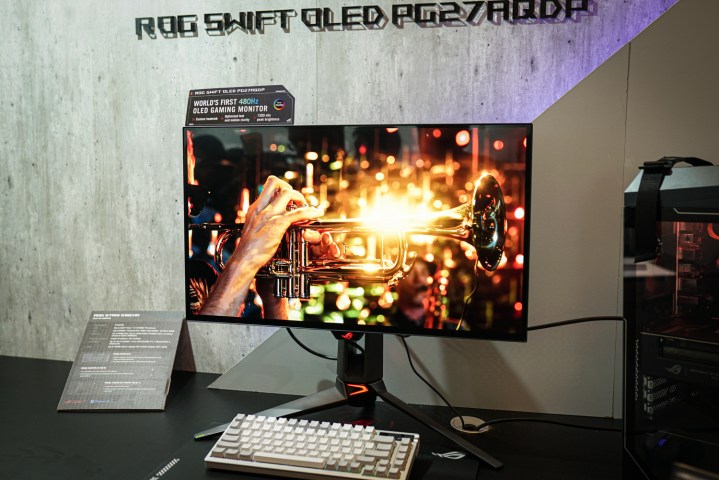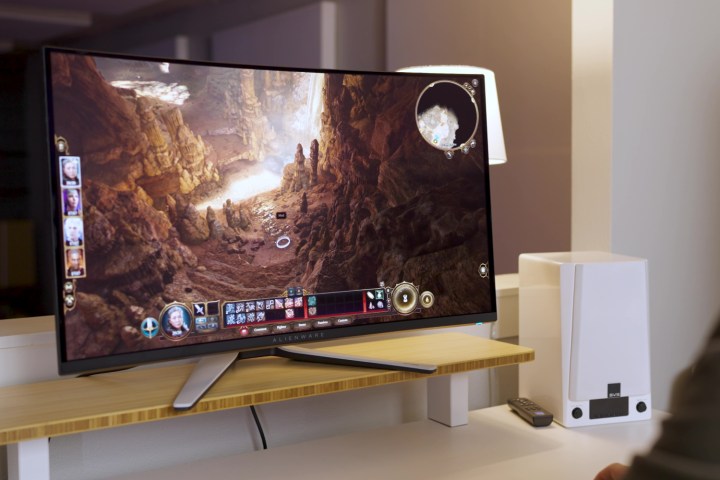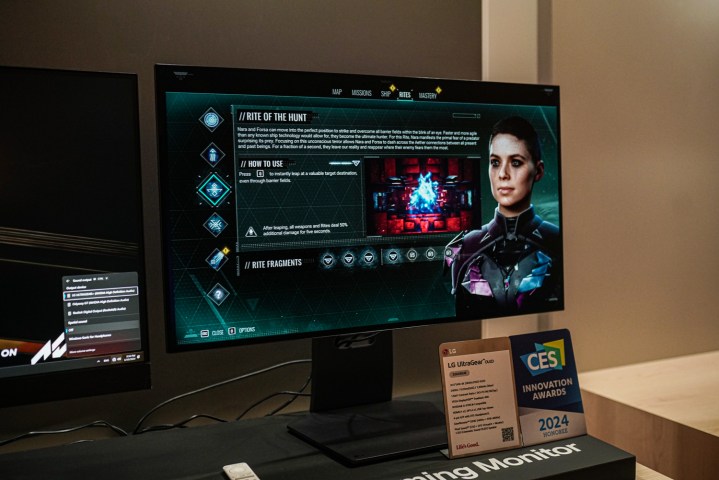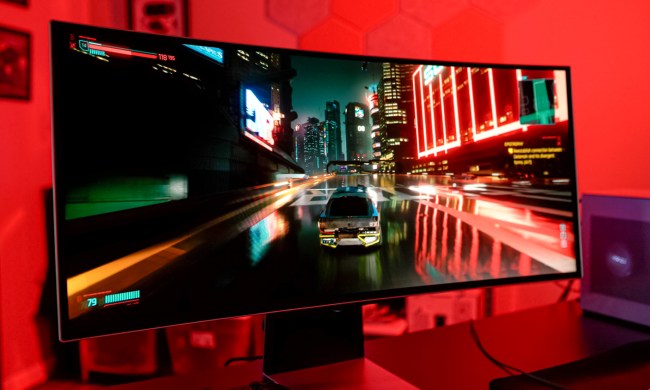
Samsung and LG Display are teeing up to battle for the panel in your monitor.
Normally, you don’t need to think about the panel inside your monitor. You look at the brand, assess the features, seek out an independent review, and make your buying decision. For OLED gaming monitors, however, the panel couldn’t be more important, as LG and Samsung Display tackle the growing display technology in very different ways.
After a soft launch in 2023, the fight is heating up this year as these two mammoth display makers fight it out — and things are about to get very interesting.
The LG angle

Let’s make sure we’re all on the same page here first. LG Display and Samsung Display are not LG Electronics and Samsung Electronics. They’re completely different companies. It doesn’t make sense, I know, but I’m talking about LG Display and Samsung Display here. They make panels, not monitors, and the electronics companies they share a name with are merely considered partners, not subsidiaries or parent companies.
With that cleared up, LG’s up first. For 2024, LG has a range of WOLED panels for gaming monitors. These use a white subpixel — hence the “W” — that emits white light. This is passed through a color filter that, similar to an LCD display, takes some brightness away in the process. WOLED monitors aren’t traditionally as bright or color accurate as QD-OLED tech, which I’ll get to next. We saw that in action with some LG Display panels last year, such as the one featured in the Asus ROG Swift PG27AQDM.
There are two main panels for gamers coming in 2024. The first is a 4K version with a 240Hz refresh rate that has a unique dual refresh rate feature. It allows you to switch to a 1080p resolution with a staggering 480Hz refresh rate with a single button. We’ve already seen several versions of this display, from LG Electronics, Asus, and MSI, to name a few.

The other is the killer, however. It’s a 1440p panel that can hit a 480Hz refresh rate. It appears Asus is the only brand that has access to this panel at the moment, but I suspect other brands will have variations once Asus’ monitor launches. The refresh rate is staggering considering we only had 240Hz refresh rate monitors last year, such as the LG UltraGear OLED 27.
Outside of the two 16:9 panels, LG Display also has a 34-inch and 39-inch panel with a 21:9 aspect ratio and a resolution of 3,440 x 1,440. We’ve seen similar variations of this type of panel before, such as on the Alienware 34 QD-OLED, but the 39-inch size is new for 2024.
The big deal for all of these displays is that we’ve seen peak brightness claims of 1,300 nits — the highest brightness claim ever for an OLED monitor. That’s due in no small part to the fact that these panels use LG Display’s Micro Lens Array (MLA) tech. This essentially puts a layer of microscopic lenses in front of the organic material used for OLED. It provides a massive boost to brightness in the process, helping LG catch up to QD-OLED tech.
The Samsung angle

Samsung Display is tackling the OLED problem in a far different way. It leverages QD-OLED, or Quantum Dot OLED, tech to achieve theoretically better color and brightness compared to LG Display’s more traditional approach. There are some technical details here, but they’re important for understanding how Samsung’s approach is different.
QD-OLED uses just blue OLED material. Those blue pixels are split up into thirds, however, with one portion going to a green quantum dot and another going to a red quantum dot, so you get a true RGB layout. The big difference here is that there isn’t a color filter. The color filter works against brightness and color accuracy, so QD-OLED is brighter and more color accurate than the WOLED approach (at least without MLA tech).
Samsung Display has two new panels this year, and they aren’t as exciting as what LG Display is offering. We have a 4K panel with a 240Hz refresh rate and a 1440p panel with a 360Hz refresh rate. That’s it; no fancy dual refresh rate features or anything like that.

The big difference compared to LG is that we’ve actually tested these panels — read our Alienware 27 QD-OLED review and Alienware 32 QD-OLED review — and they’re stunning. They posted the best color accuracy we’ve ever recorded for a gaming monitor, and reached the true 1,000 nits of peak brightness that the panel is capable of. Samsung Display may not have any flashy new features, but its two QD-OLED panels are standouts.
This is the third generation of QD-OLED panels from Samsung Display, and they address one of the key issues with the first two iterations. Due to how the panels split the blue pixel, the subpixels aren’t all the same size. This, in previous versions, has created color fringing on fine details like black text on a white background.
It’s not completely gone, but it’s very hard to notice any fringing on text in these third-gen QD-OLED panels. It was one of the key reservations we had about previous versions, and Samsung Display has mostly addressed the problem.
Who will come out on top?

The battle between Samsung Display and LG Display is just starting to heat up, and we’ve only had a chance to see one side of the fight. The early offerings from Samsung Display are very impressive, but LG has some key details working its favor.
Brightness is the mai factor we’ll be looking at this year. LG Display is making higher brightness claims, but we’ll have to see how those actually play out in practice. Brightness is the main criticism of all OLED gaming monitors right now — be it WOLED or QD-OLED — so whoever wins the brightness battle will likely come out on top.
LG certainly has the upper hand in the fight here, considering it’s sporting refresh rates beyond anything we’ve seen before for OLED monitors and its interesting dual refresh rate feature. For now, it’s just a waiting game to see if LG Display can deliver on brightness and color accuracy, which have been pain points for the panels in the past.




